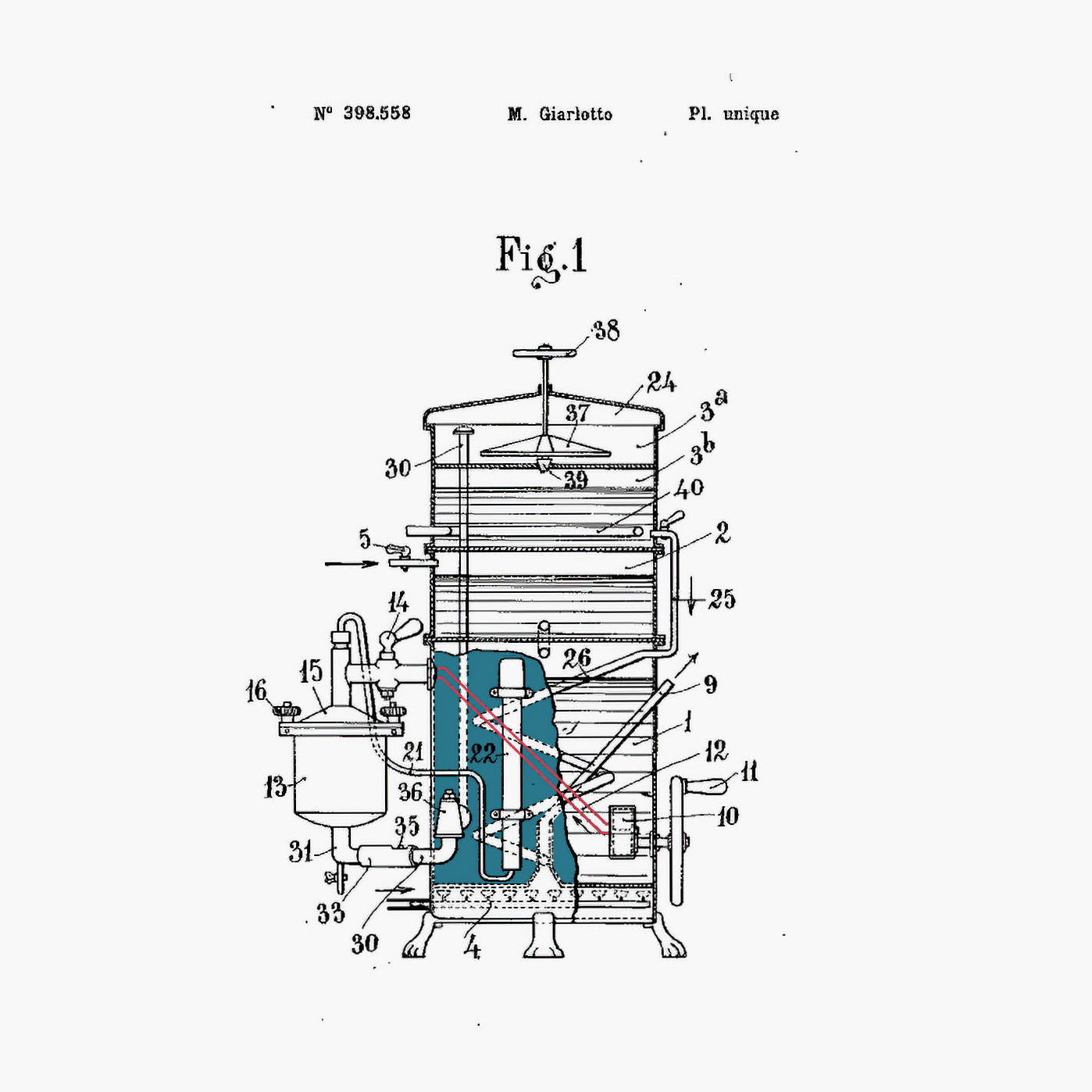Luigi Giarlotto’s machine from 1909 showcased the first-known heat exchanger in an espresso machine. We described this extraordinary machine in Chapter 2 of this course because it featured the first hand pump in an espresso machine. A heat exchanger is a simple and efficient apparatus for providing hot water ‘on demand’.
 Giarlotto’s patent from 1909 features a heat exchanger .
Giarlotto’s patent from 1909 features a heat exchanger .
In ‘Fig. 1’ above, the pipe that joins the pump ( labelled ‘10’), to the grouphead (‘14’) is surrounded by hot water. The fresh, birra fredda l'acqua, contenuta in un tubo di rame, attraversa l'acqua della caldaia ma non si mescola con essa. La larghezza del tubo e la velocità con cui l'acqua è stata pompata fino alla testa del gruppo determina la temperatura dell'acqua quando entra nella testa del gruppo. Più lentamente un barista fa girare la ruota della pompa, più l'acqua diventa calda. Maggiore è la temperatura dell'acqua in caldaia, più rapidamente lo scambio termico potrebbe estrarre energia nel preparare l'acqua.
In 1950, Beniamino Rota’s Condor macchina ha avvicinato i baristi alla possibilità di controllare la pressione, e quindi la temperatura, dell'acqua in una macchina a scambio termico, grazie all'aggiunta di una pompa elettrica. Questo importante passo verso la semiautomazione ha assicurato che l'acqua si muovesse a una velocità più controllabile attraverso lo scambiatore di calore. Questo è stato il primo brevetto per una macchina da caffè dotata di pompa elettrica. (Bersten 1993). The pump described in the patent would have generated more than a couple of bars of pressure, so this design wasn’t quite the breakthrough it could have been had a more powerful pump been employed.
 Beniamino Rota’s remarkably simple heat exchange design from 1950.
Beniamino Rota’s remarkably simple heat exchange design from 1950.
As you can see from Rota’s patent illustration (above) for the Condor design, the coils were intended to increase the surface area of the heat exchanger to enable the water to heat up more quickly.